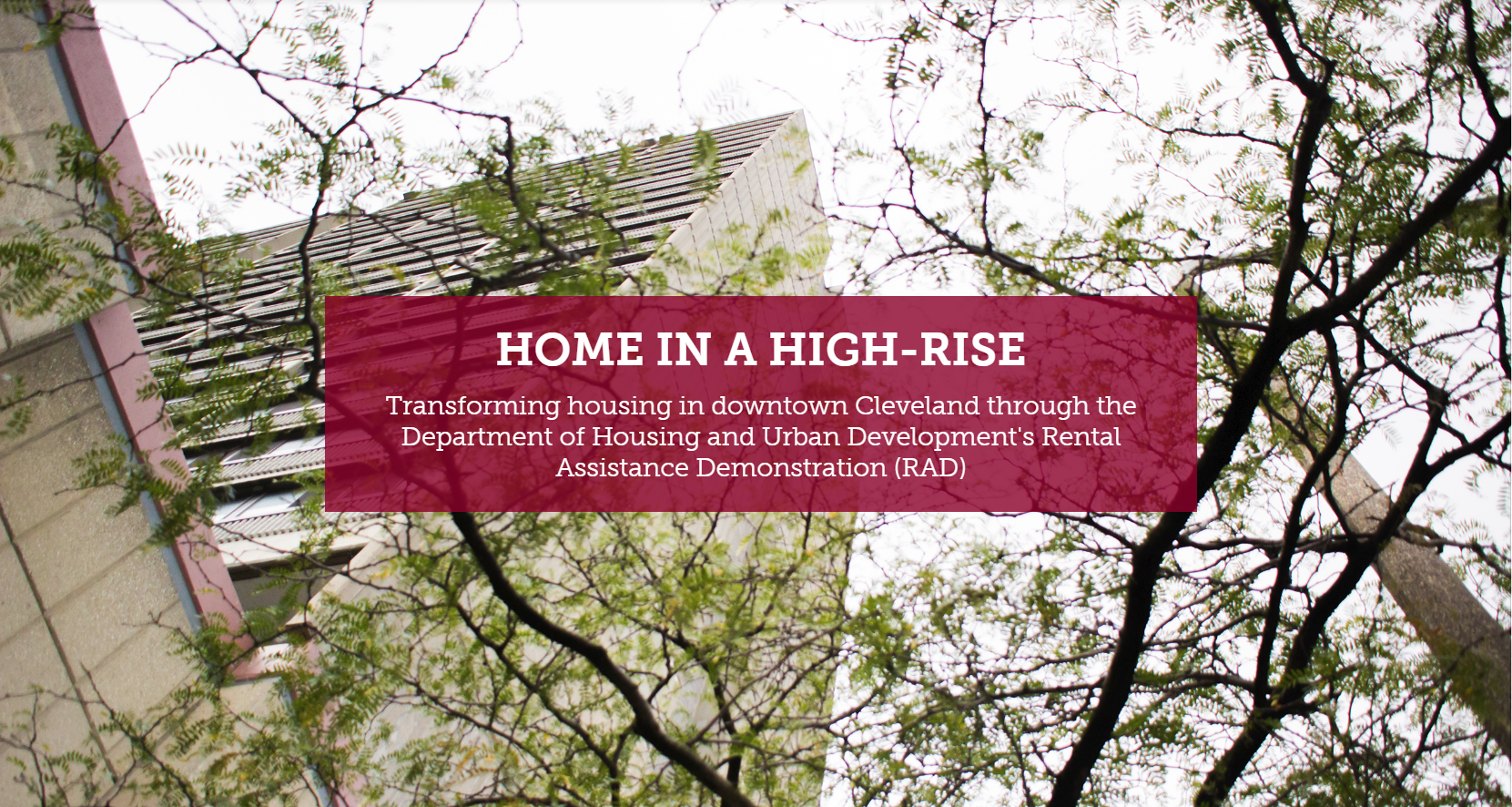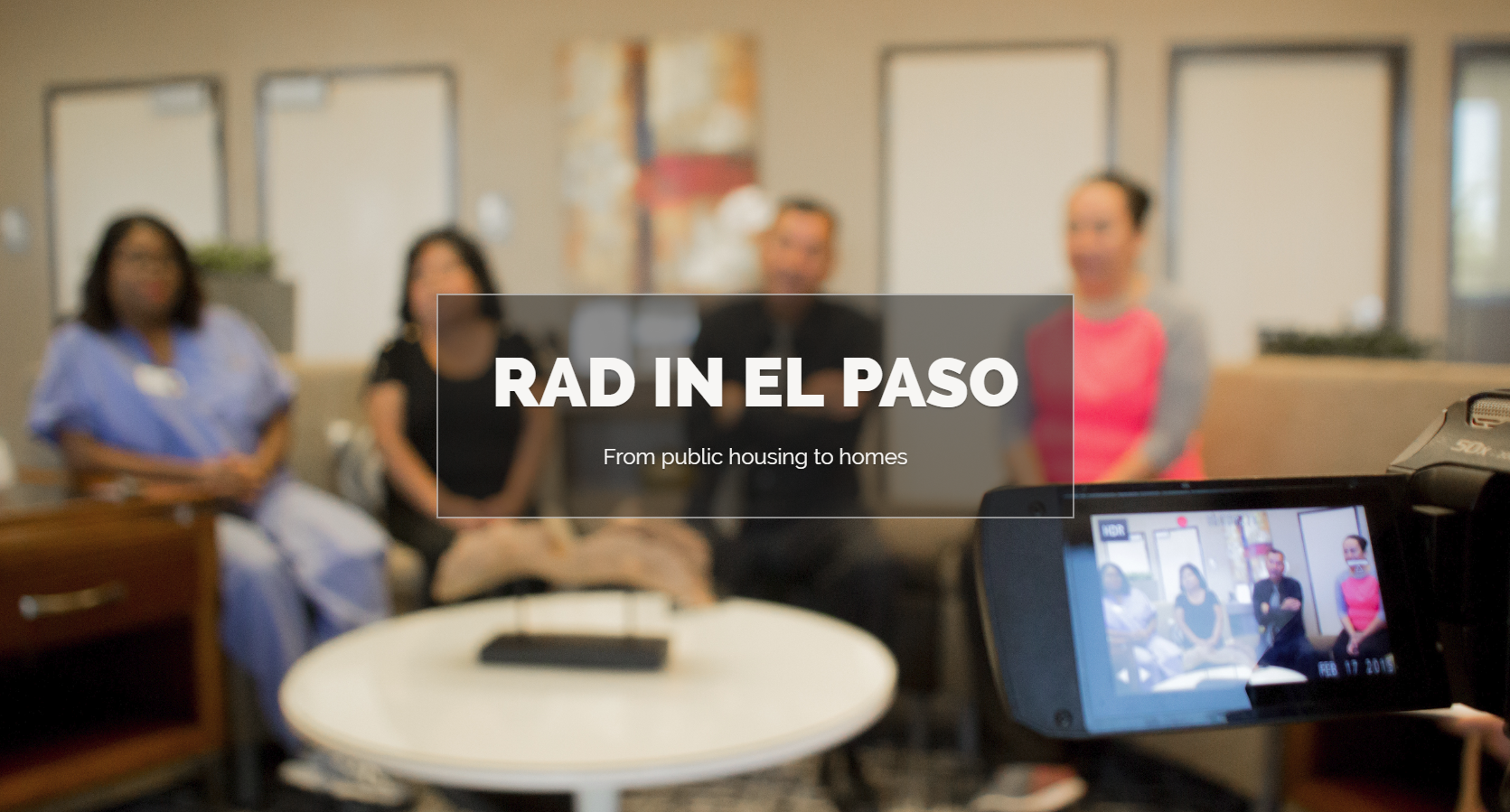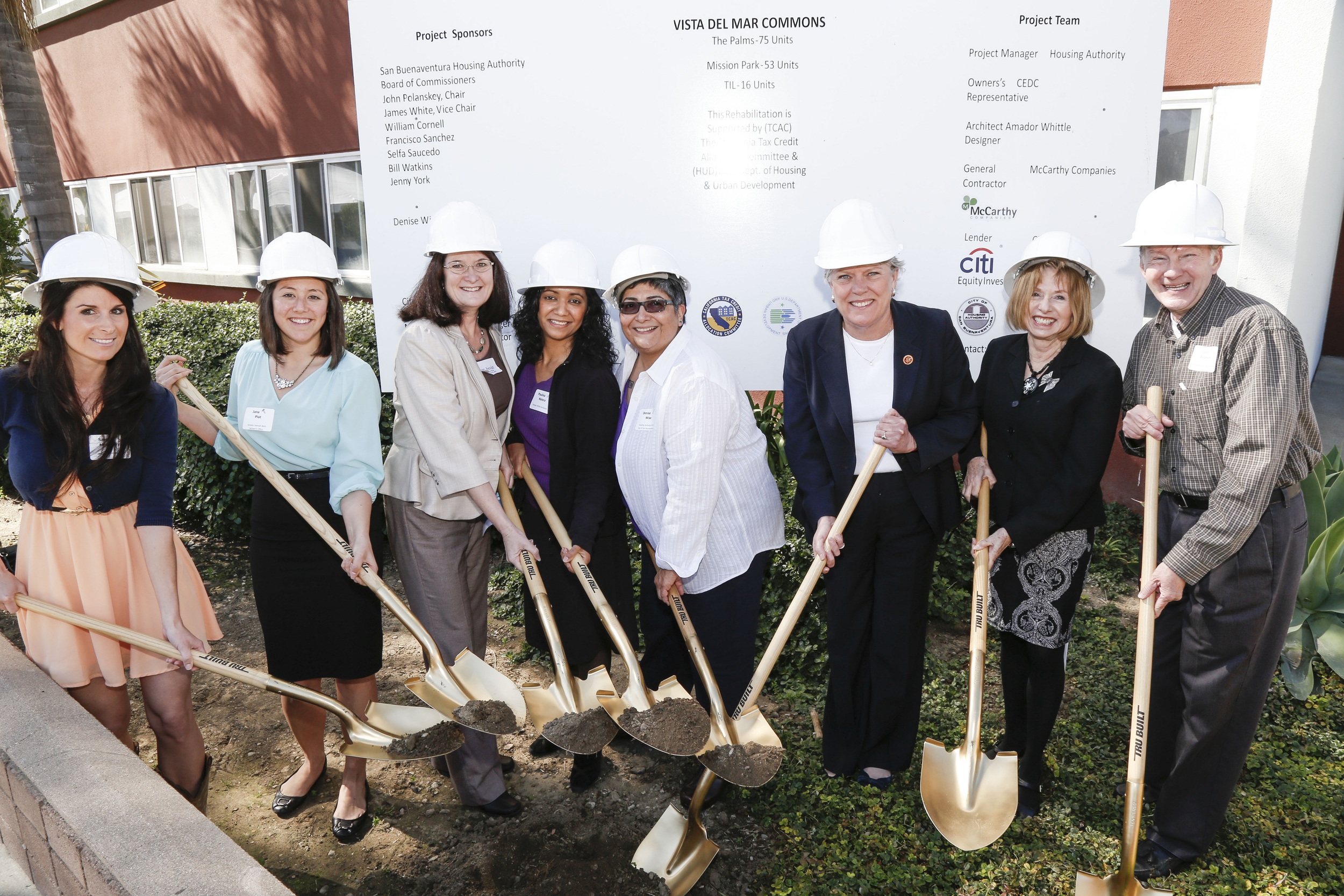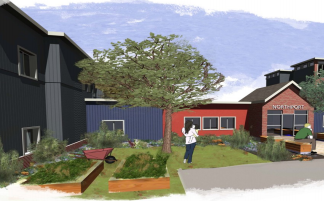RAD Practice
COVID-19—RAD & Redevelopment Matters
December 1, 2020: As HUD PIH and Multifamily Housing now maintain reasonably current web-pages devoted to the latest pandemic-related guidance, notices, updates, Q&As, etc. impacting RAD conversion and redevelopment matters, we recommend directly checking these web pages first.
PIH pandemic-related info, including RAD-converted PBV properties
Multifamily Housing pandemic-related info, including RAD-converted PBRA properties and under What’s New! on MF Housing landing page
We will augment these listings and highlight pending application or program deadlines as needed below. Detailed listings offered throughout 2020 can be found in the RAD Practice Archive; click on the box to the right, above.
Noteworthy RAD Developments
RAD Status
As of December 2021
RAD Nears $14 Billion in Additional Capital! - See RAD Resource Desk for Latest Data
RAD Generates $10 Billion in Additional Capital - HUD’s Summary Graphic on $10 Billion Milestone
RAD Preserves 100,000 Public Housing Units - HUD’s Summary Graphic on 100k Milestone
RAD State-By-State Data - State-Level Fact Sheets Available on RAD Resource Desk
RAD 1st Component - Latest Data on Closings, CHAPS Awarded, Current Applicants, Reserved Units & More
Wait List - Due to the RAD public housing cap increase, "RAD Waitlist" updates are no longer applicable
RAD 2nd Component - Closed Transactions-To Date
RAP Properties All Converted! - RAP Wind Down
Rent Supp Properties All Converted! - Rent Supp Wind Down
RAD Case Studies- HUD produced case studies
RAD Notices & Authority- Recent HUD notices & legislation
RAD Tools & Helpful Info
Latest RAD Resources
New- ‘Chalk Talks’ on Maximizing Whatever BBB May Bring
The Collaborative asked Greg Byrne—HUD Recap Office’s recently retired director of transactions—to synthesize available data on public housing’s remaining capital needs and the best strategies for fully addressing them, including tapping any funding that a potential BBB bill may offer for affordable housing. Listen to Byrne’s 3-part series on what and how that can be done under various scenarios.
New-HUD Rolls Out Streamlined Process for Faircloth-to-RAD Conversions
On April 8, 2021 HUD introduced its streamlined process for converting newly placed in service Public Housing units to RAD by aligning and merging components of its public housing mixed-finance program and RAD conversions of assistance. The new Faircloth-to-RAD option offers pre-approval for converting properties to RAD when PHAs tap their bank of 227,000 units of unused Faircloth authority to construct or acquire new Public Housing developments. There’s now a more viable process for PHAs to add over a quarter of million net new units to the affordable inventory!
To help PHAs get started, HUD has produced guidance PHAs and their partners can use to learn the process and make the appropriate submissions to its Mixed Finance and Recap offices. HUD has also outlined the Faircloth-to-RAD process here. A complete list of PHAs with available Faircloth cap authority by state can be found here.
Review a helpful summary and step-by-step guidance in developing a Faircloth-to-RAD conversion application by Reno & Cavanaugh.
Recently, the Collaborative and the Terner Center for Housing Innovation at the University of California, Berkeley jointly conducted a brainstorming session with interested PHAs on how Faircloth-to-RAD conversions might work in CA. If interested in conducting a similar session in your area, please contact: info@radcollaborative.org.
New-HUD Section 18 Update Offers New Section 18/RAD Blends & Other Flexibilities
On January 19, 2021 HUD published Notice PIH 2021-07 (HA) superseding and replacing its 2018 Section 18 notice regarding the demolition and/or disposition of public housing property, eligibility for tenant protection vouchers, and associated requirements. The notice offers new construction-boosting and small PHA Section 18/RAD blends provisions.
See the Collaborative’s summary of key provisions, Reno & Cavanaugh’s overview and blackline of revisions against the previous notice and HUD’s RADBlast about the new provisions.
On February 23, the Collaborative hosted a forum with Recap Office leaders to dig into these changes—and opportunities. Find HUD’s overview presentation deck worth keeping handy, and a recording of the session for a more in-depth discussion of the opportunities afforded by the new blends.
RC’s Patrick Costigan offers an overview of the blends and discusses resulting opportunities with Don Bernards and Garrick Gibson of Baker Tilly in its February 2021 affordable housing podcast: BuzzHouse: Public housing portfolios to benefit from recent HUD notice…
New-FY2020 Rents for RAD Conversions Now Available
On December 15, HUD posted the 2020 RAD Contract Rents, which will be applied to any new RAD awards starting January 1, 2021. In addition, current awardees that have not yet closed may request to update rents in their existing CHAPs by contacting their assigned Transaction Manager, Closing Coordinator, or resourcedesk@RADresource.net. PHAs and their partners assessing RAD conversions are encouraged to give a good look at the new rent levels, which tend to increase relative to strong Public Housing Operating and Capital Funds appropriations levels as seen in FY2020.
Handy References
New-HUD Repositioning Guides
Smart public housing repositioning strategies go beyond RAD conversions alone given many recent Section 18 flexibilities and the new RAD/Section 18 blends. HUD has produced 3 different, very helpful guides on planning and executing various repositioning options—for very small, small and medium-to-large size PHAs and their partners on assessing, planning and executing The Q&A style case studies offer great insights. Plus there’s a thorough glossary of terms at the back of each guide. Access them off the RAD Resource Desk.
New-HUD Offers Guidance on New Section 3 Rule in RAD Public Housing Conversions
On March 31, 2021 HUD updated the Section 3 rule in order to focus on economic opportunity outcomes while simultaneously reducing regulatory burden, improving Section 3’s effectiveness, streamlining some processes that have not yielded significant benefits, and encouraging HUD grantees to focus on sustained employment for low- and very low-income individuals. HUD has recently posted brief guidance describing the applicability of the new Section 3 rule to RAD conversions on the RAD Resource Desk.
HUD Updates RAD PBV & PBRA Quick Reference Guides
On October 8, 2020 HUD posted updated versions of the RAD PBV Quick Reference Guide and the RAD PBRA Quick Reference Guide. These guides provide PHAs converting properties via RAD with guidance and references to prepare for administering Section 8 PBV or PBRA programs following conversion. The guides have been updated to reflect program changes and to incorporate frequently asked questions from the last few years.
HUD Issues Proposed Rule on HOTMA Implementation for HCVs, PBVs—Including RAD PBVs
On October 8, HUD issued a Proposed Rule to update project-based voucher (PBV), including RAD PBVs, and housing choice voucher (HCV) regulations to conform to the changes authorized by the Housing Opportunity Through Modernization Act of 2016 (HOTMA). Proposed provisions include enforcing HQS requirements, removing requirements to enter into AHAP Contracts prior to executing HAP Contracts for rehabilitation and new construction projects, and establishing rules for owner-maintained site based waiting lists, among certain streamlining provisions. HUD seeks comments on this notice by December 7, 2020. The Collaborative will work with CLPHA and Reno & Cavanaugh in reviewing and offering comments.
PIH Clarifies Section 18 Eligible Use of Proceeds
On September 9, 2020, HUD released Notice PIH 2020-23 outlining the eligible uses of Section 18 Disposition or Section 22 Voluntary Conversion funds PHAs gain from the sale, transfer, ground lease or disposition of their properties. Among other things, the notice identifies acceptable uses of both net and gross proceeds, all applicable reporting and record-keeping requirements for the receipt and expenditure of proceeds, and the various recapitalization programs under which PHAs may utilize funds pursuant to Section 18.
Guidance on Successfully Implementing RAD’s Choice-Mobility Option
In August 2020 the Poverty & Race Research Action Council published a Guide for Successful Implementation of Rental Assistance Demonstration (RAD) Choice-Mobility that recommends practices for PHAs and project owners of converted public housing properties on the effective implementation of RAD’s “Choice-Mobility” option. Choice mobility rights provide residents with the option to obtain a Housing Choice Voucher (HCV) from their PHA after a defined period of occupancy, enabling them to move to affordable rental properties of their own selection. The Choice-Mobility provision is a central feature of the RAD program, and one with significant potential to expand a family’s residential choices and life opportunities.
Post-Conversion Processing Guide
HUD in late July 2020 posted to the RAD Resource Desk a new “Post-Conversion Approval Processing Guide,” found here. The guide provides information to Owners and PHAs on how to process post-closing issues that may arise after RAD conversion, some of which require HUD approval.
Asset Repositioning Training Videos
Also in April, HUD posted new training videos with case studies on Asset Repositioning that review how PHAs can best use RAD, Section 18 and other HUD tools to transition their inventories to the Section 8 platform:
Asset Repositioning for Small PHAs (see here for closed captioned version)
Asset Repositioning for Medium and Large PHAs (see here for closed captioned version)
FAQs on the Use of TPVs for Public Housing
HUD in February 2020 updated general guidance in the form of FAQs on current policies and regulations for Tenant Protection Vouchers (TPVs) relative to the public housing actions outlined below, which is posted on the Department’s new, very helpful web sub-page for TPV information:
Demolitions and/or dispositions approved under Section 18
Demolitions authorized under de minimis authority of Section 18
Required conversions approved under Section 33
Voluntary conversions approved under Section 22
Homeownership plans approved under Section 32
Removals authorized under Choice Neighborhoods and/or HOPE VI grants
Resident Relocation Tracking Log
HUD in February 2020 posted a form of a resident log that PHAs may use to track data points needed to satisfy RAD’s relocation monitoring requirements. PHAs and owners are encouraged to use this or any other form with at least this minimum level of information.
Revised Environmental Review Guide
In January 2020, HUD published a revised guide on Environmental Review Requirement for RAD Conversions. This update provides improved guidance to all property types (public housing, Mod Rehab, and PRAC) converting under RAD and implements the strengthened environmental requirements introduced in Revision 4 of the RAD Notice including new radon and HEROS Part 50 Environmental Reviews along with a streamlined environmental review for conversions without any rehabilitation.
HUD Releases RAD Revision 4 Including New RAD-for-PRAC Guidance
On September 5, 2019 HUD released the fourth revision to the RAD Notice or RADRev4, which includes several new flexibilities for converting public housing properties to RAD along with details on how to convert newly-authorized Section 202 PRAC projects under RAD’s 2nd component. HUD’s summary can be found here, along with registration information on several upcoming webinars on the details of RADRev4. The complete notice and a blacklined version comparing the new version to the previous notice can be found below:
Starting with our Southeast Regional Convening in Greensboro, NC September 11-13, the Collaborative will engage with HUD and experienced practitioners to offer briefings and analyses of the details and opportunities within RADRev4 in the coming weeks. Access many of the materials discussed at the Convening here.
As HUD completes its RADRev4 webinars, find training outlines from each session here:
Finally, see the joint comments of the Collaborative, CLPHA and Reno & Cavanaugh provided in response to HUD’s request for comments on certain matters related to RADRev4. We also offered additional comments on potential implementation issues and how best to address them.
RAD Myths & Facts—Updated 4.15.19
Regrettably, a few publications that have recently reported on limited RAD implementation issues related to relocation, resident processes and HUD oversight, among others, have also mischaracterized various features of RAD in the process. All practitioners should be concerned about and work together to eliminate any aberrant implementation practices. It is unfortunate, however, when misunderstandings and/or myths about RAD cloud reported practice issues and—more importantly—what may or may not be needed to effectively address them.
Along with HUD, PHAs and their partners, the Collaborative has begun to reach out to these publications to promote a better understanding of how RAD works. To help with this effort, we have pulled together, updated and tried to sort clear facts from a range of myths that continue to circulate, which can be found here. We will periodically update this compilation as needed. Please send along suggestions for what would be helpful to include in future updates by sending an email to: info@radcollaborative.org .
Notice & Supplemental Guidance on RAD's New Authorities & Tools
HUD published on July 2, 2018 a new notice and supplemental guidance with important new information for implementing changes to RAD’s new authority in the FY18 Appropriations Act, along with details on 5 new innovative tools to simplify RAD conversions while extending its reach to additional public housing developments. Significant flexibilities were also outlined for the remaining Rent Supp, RAP and Mod Rehab properties yet to convert to long-term Section 8 contracts under RAD. (Information on converting Section 202 PRAC properties under RAD will be detailed in a forthcoming notice expected in the Fall).
The July 2 RADblast! offers a good summary of these changes, along with direct links to the new notice and guidance, revised FY16 RAD Rent table for the balance of FY18 and a version of the Revision 3 RAD Notice reflecting these changes. To access all this information, click here, along with an initial batch of FAQs on blending these new authorities.
On July 9, 2018, HUD hosted a live webinar on the provisions of both notices. The webcast of that session can be accessed at the RAD Resource Desk. The presentation outline used in the webinar can be found here.
Reno & Cavanaugh has prepared a concise summary of the new provisions. Also, Dominion Due Diligence (D3) recently offered a helpful orientation to combining RAD and the new Section 18 provisions, with materials from the session available here.
RAD Extended in FY 2018 Omnibus. Key points in the Omnibus bill include:
RAD Public Housing Cap raised to 455,000 units. Plus RAD’s sunset will now be extended to 2024, potentially giving breathing room to the building flow of portfolio and multiple project conversions.
RAD now covers the Section 202 PRAC inventory. Now ~120,000 units of senior housing at risk of being lost from the inventory will have a viable preservation path. The language also offers helpful subordination language for capital advances. And, it gives the Secretary authority to direct funding from accounts for “Housing for the Elderly” in support of PRAC conversions.
Flexibility for Rent Supp & RAP conversions. A further provision provides flexibility for adjusting Rent Supp & RAP rent levels in high-cost areas.
HUD will now prepare a revised RAD notice to fully address how the additional authority will be allocated for both public housing and the RAD’s multifamily component.
Beyond RAD-specific provisions in the Omnibus, the Affordable Rental Housing ACTION coalition reported on two key provisions to strengthen and expand the Housing Credit:
A 12.5% increase in 9% LIHTC allocation, effective for four years (2018-2021).
A provision authorizing income averaging in Housing Credit properties, on a permanent basis upon enactment of this bill. Allows Housing Credit units to serve households earning up to 80 percent of area median income (AMI), offset by deeper targeting in other units to maintain average affordability in the development at 60 percent AMI. The 60 percent AMI ceiling would apply to the average income limit for all apartments in a development rather than each individual Housing Credit apartment.
Underwriting Considerations for Existing “Mixed Finance” Projects. At the heart of RAD is the requirement that, prior to conversion, a project can reasonably demonstrate that it has the resources to meet the 20‐year capital needs identified in the Capital Needs Assessment (CNA). Often, public housing mixed‐finance projects were developed in conjunction with low‐income housing tax credits and, therefore, involve outside investors, owners, and lenders. Unlike traditional public housing projects, existing public housing mixed‐finance projects can find it impractical to refinance the property, or to re‐size the annual deposit to replacement reserves, prior to the end of the tax credit compliance period. To respond to these realities, the HUD Recap Office has adopted alternative underwriting criteria for mixed‐finance projects that are unable to meet the 20‐year capital needs identified in the CNA at the time of conversion under standard underwriting criteria.
RAD Minority Concentration Analysis Mapping Tool. HUD recently released the RAD Minority Concentration Analysis Tool in order to allow PHAs to quickly assess whether a proposed site for new construction or transfer of assistance under RAD is or may be in an area of minority concentration. The report provides the data needed for the analysis described in H/PIH 2016-17, including minority data from the Census for: 1) the Housing Market Area; 2) the census tract; 3) the area comprised of the census tract of the site together with all adjacent census tracts; and 4) an alternative geography if proposed by a PHA. To utilize the tool, the user must first login. Depending on the output of the tool, a PHA can determine whether: a) an upfront review by HUD is not required; b) a review by HUD is needed to confirm that the site is not minority concentrated; or c) the area is minority concentrated and could only be approved if it meets one of the exceptions for building in an area of minority concentration.
RAD Project-Based Voucher OCAF Worksheet. RAD contract rents are adjusted at each anniversary of the HAP contract by the Operating Cost Adjustment Factor (OCAF) HUD publishes each year in the Federal Register. While OCAF adjustments are commonly used in PBRA, it is new for PHAs and the Project-Based Voucher program and includes some nuances that PHAs may not be aware of. Consequently, HUD has produced the RAD PBV OCAF Rent Adjustment Tool to assist PHAs and independent entities to annually adjust contract rents. Please note that while this is not a required worksheet and should not be submitted to HUD, HUD recommends that the PHA retain a copy of the methodology used to adjust the RAD contract rents for audit purposes. The worksheet is available by clicking on RAD PBV OCAF Adjustment Tool in the Contracts & Closing Documents in the Document Library of the RAD Resource Desk.
Initial-Year Funding. Following from an earlier listening session on the RAD closing process, HUD’s Recap Office has developed helpful Initial-Year Funding Instructions that describe the calculation of funding during this period, as well as how to access these funds. It also has revised and simplified the Initial-Year Funding Tool, which is an Excel-based worksheet to help calculate the amount of revenue available to a project in the Initial Year of a RAD conversion. Active access to the Tool is enabled by logging into the RAD Resource Desk.
PBV Provisions in HOTMA 2016. The Housing Opportunity Through Modernization Act of 2016 (HOTMA) offers several new PBV provisions—some based on RAD practice, others new—that will apply to RAD PBV conversions once HUD issues implementing regulations. PBV Details in HOTMA 2016 offers a detailed summary. Plus, find a HUD-produced tutorial on HOTMA's implementation here.
RAD & EPCs. For some helpful answers to questions about how RAD and Energy Performance Contracts can best work together, click here.
RAD Reports
2020 Research Shows Positive Health Outcomes for Residents of RAD-Converted Properties
A 2020 study published in Health Affairs examined how renovations of Queens, NY property that converted through RAD found statistically significant improvements in “housing-sensitive” health conditions (such as asthma, hypertension, etc.) for residents due to improved housing conditions compared to a control group of Medicaid enrollees.
In a HUD released-report, "Examining the Effects of the Rental Assistance Demonstration (RAD) on Children Living in Public Housing in Fresno, California," a research study found notable and mostly positive results where significant improvements had been made, including perceived safety and connectedness; and enhanced resident resources and pride of place.
2nd Phase RAD Evaluation Underscores Proof-of-Concept
On October 22, 2019 HUD released the results of an evaluation of the Department’s Rental Assistance Demonstration, a report that finds significant evidence that RAD is stimulating billions of dollars in capital investment, improving living conditions for low-income residents, and enhancing the financial health of these critical affordable housing resources.
RAD Evaluations & Other Reports- HUD and other released reports on the RAD program






















